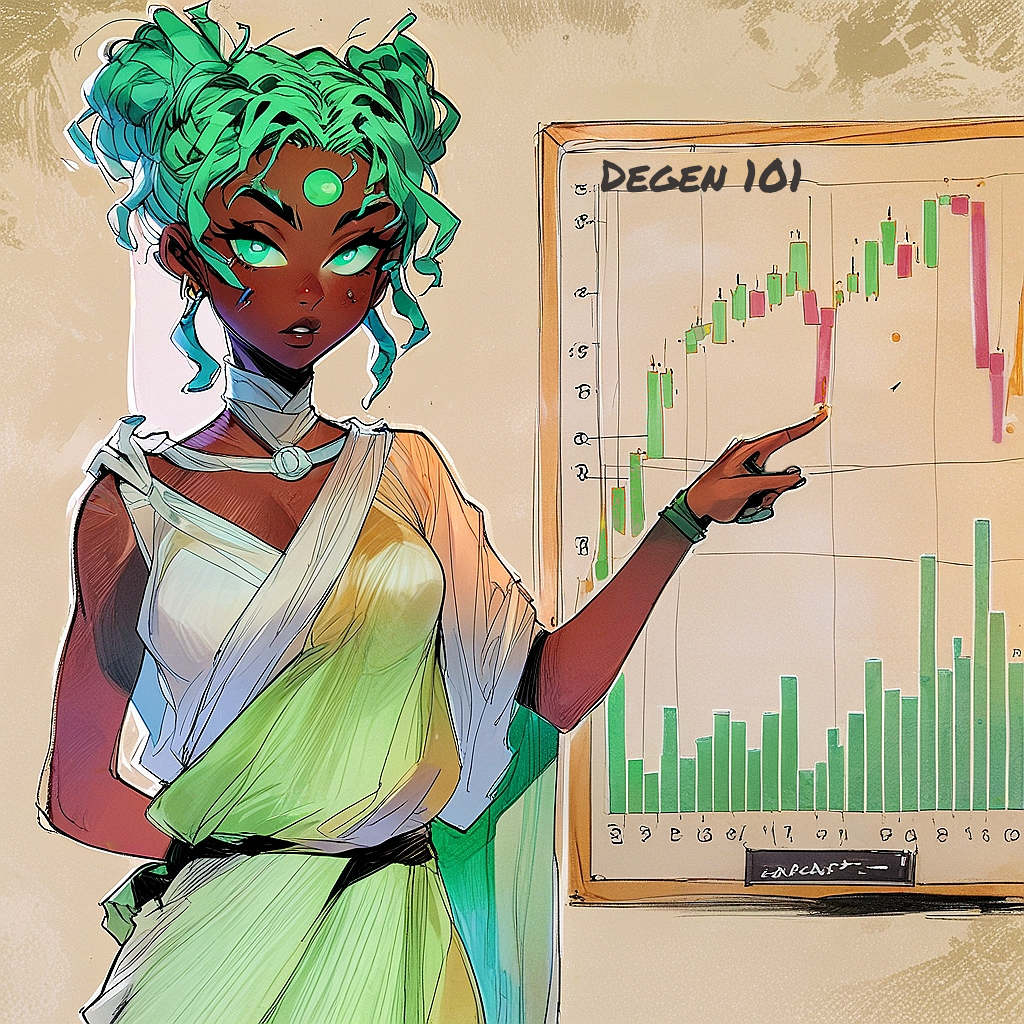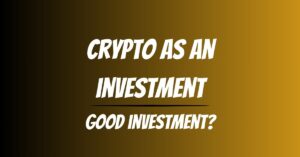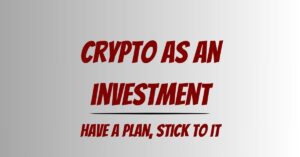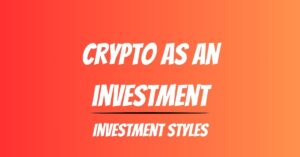So… most of you are here to try and make some money. That’s totally fine.
But how do you choose which token(s) to buy?
Well we absolutely are not going to tell you how to spend any of your money, nor are we giving you “the one secret billionaires don’t want you to know.”
What we have assembled here is a series of ways in which you can evaluate a token; hopefully putting these in to practice helps you make some money, or you know, helps you get less #rekt#.
It is important to note that a project does not need to meet all of the evaluation criteria in order to be a “good” project. Similarly ticking all the boxes doesn’t mean something isn’t a bad project or even a scam.
We talk more about this within each section but as we have repeated many times on this site; this is not financial advice, do your own research, do not invest more than you can afford to lose.
Many experienced traders will use only a small subsection of these factors; often with great success. We would advise learning as much as you can when you’re new until you fully understand when and why you might choose to only focus on one or two metrics.
Why am I buying a token?
This should be the first question you ask yourself before making an investment in crypto. Note this is not “why am I buying *this* token?” – it’s literally “why am I buying *any* token?”.
There could be any number of answers to this question, and all of them could be valid, but it is important to know what your aim is. You should be able to say that aim in a sentence.
If you haven’t already, we would recommend checking out Crypto as an Investment: Have a plan and stick to it
The exact nature of your goals, time frame, and risk tolerance, will have a huge impact on what you’re looking for in a token.
For instance; if your risk tolerance is high, you want to make a big profit, and your time frame is short – you might be willing to allow a few red flags to slide.
On the other hand: if your time frame is long and your goals are modest; you will likely want to find a coin or token that ticks all the boxes in order to lower your risk exposure.
What type of token am I looking at?
So you know why you’re investing now, let’s talk about the token you’re trying to evaluate. What is it? We have two full articles diving in to the major kinds of coins and tokens, you can read them here:
Types of Cryptocurrency: Coins and Blockchain
Types of Cryptocurrency: Tokens, Altcoins and more
Why this matters:
Knowing what type of asset you’re investing in means you can decide which metrics matter most to you.
For instance; if it is a #memecoin# then you probably won’t expect it to have much in the way of #utility#. On the other hand, something like a liquid staking derivative (#LSD#) might not have as much in the way of community; you might decide that it doesn’t need much hype to be a good buy.
These two examples are just that, examples. Every project is different; but knowing what a project is “trying” to be means you can make a better judgement call on whether you feel it will succeed. More importantly, you can decide if “what it wants to be” has value.
Project temperature check:
Before we get on to the various #metrics# and buzzwords, a great place to start is often simply looking at what the project says about itself, and what others are saying about it.
So, how do you do this?
Twitter/X:
Almost every crypto project will have a twitter/X account; for some reason this is just where we all decided to live. Twitter/X is a great place to start looking into a project to get a feel for its “legitness”, its “community”, and how much effort the team seems to be putting in.
Some things to look for include:
- Do they have many followers?
- How often are they posting; is the content they are posting actually good content?
- Are the followers they do have actively engaging with their content?
- Do follower engagements look genuine? Are people asking thought out questions and giving real opinions, or is it all just fire emojis? (there are a lot of bots out there
- Are other people talking about them? (You can find out by searching for their #ticker# or relevant hashtags.) If so, do these accounts look real and are they saying actual useful things about them (instead of regurgitated hype)?
- Are they effective at preemptively answering the questions YOU have about the project?
Project Website/Docs
Most projects will have a website and a separate “docs” (documents) link; this might be on their site or on a third party site such as github. Some will only have one or the other. This is where you will have the biggest concentration of info that the project says about itself.
Some things to look for include:
- Is what they’re saying consistent throughout their site/docs? Are the two consistent with each other and/or their other outlets (twitter/telegram/discord etc.)
- Is the information up to date?
- Does what they say make sense to you? Do they explain the jargon they use?
- Have they got full information on their #tokenomics# (see below)?
- Do they have a #roadmap#; if so do they appear to have stuck to it so far? Were there delays? Did they keep their community updated?
- Does their Value Proposition make sense? Can you see why this project is worth the money you hope it will be?
Telegram/Discord
Almost every project will have either a telegram (a free encrypted chat app) channel or a discord (another chat app) server. Some will have both. These are a great place to get a feel for what the project’s community and team are like.
Things to look for include:
Things to look for include:
- Are people active there, and are they actually having meaningful conversation? (AI bots are getting good these days).
- What is the response time like from the team when people ask questions?
- How do they respond to questions that probe into the value of the project? If you get banned for pointing out you don’t understand something; run a mile.
- If you feel “hype” will be a major component in the success or failure of a project; is there hype in the chat?
A note: Pretty much every project will have a few entitled asshats in their chats (or they’ve banned them) complaining about something or other. As an example, in a 6 month period earlier this year Metis token increased from ~$10 to around ~$100; there was still a constant stream of complaints in the telegram channel. If on the other hand the main sentiment from most people in their chat is negative; that is worth paying attention to.
Tokenomics and Token Metrics
These are two words you’ll see thrown around, often surrounded by completely unjustified hype: “Bro! Their tokenomics are sooooo sick.”
We will be breaking down what both of these are below; and the main examples of each. Once again let us say that just because a token has good tokenomics or token metrics does NOT mean it is a good buy. Similarly often a lot of the “undiscovered gems” will have several red flags in these categories.
What the hell are tokenomics?
Tokenomics are key features in the design of a token; these are things the token designer has decided and put in place. For most projects you’ll be able to get a breakdown of the tokenomics in their #docs# or on their website; we would recommend verifying these using a third party source (more on this in the Metrics section below); especially if it is a newish project.
Another thing to keep an eye on is how often and accurately a project updates their tokenomics to reflect any changes that were made; out of date information and a lack of transparency can be a red flag.
Total Supply
This is the total number of tokens that can ever exist. Not a lot can be said about token using this; it is kind of arbitrary. A tactic used by early meme coins was to have huge total supplies to ensure the individual token price was very low. This did, and still does with noobies, fool some people into thinking the token had huge potential for gains. Token price is not a good indication of a token’s growth potential; we talk about this more in Marketcap/FDV below.
Capped or Uncapped Supply
One thing to look out for is whether the token supply is capped or uncapped. A capped supply means that there is a total number of coins that can ever exist; the majority of projects have capped supplies.
Uncapped means the supply is unlimited; more can be made, forever. Obviously every time a new token is made this has a negative impact on the supply of all tokens.
A token being uncapped isn’t a red-flag in and of itself, but you need to have a very good understanding of why it is uncapped (Ethereum is uncapped for instance but has been #deflationary# for some time now.)
Questions to ask include:
- Why does this project need an uncapped supply
- When, why, and how can new tokens be generated
- Is there any mechanism in place that actually makes the new tokens retain value
- Is there any mechanism by which tokens are #burned# or will this inflate forever?
Allocation
Allocation is a breakdown of who gets what tokens, and how many. It is often presented as a pie chart and is closely tied to the Release Schedule (below). Allocation is particularly important to look at when considering investing in a brand new token; for existing tokens Token Distribution is more important.
Things to look for include:
- How many tokens do the team get; make sure to read all the headings fully as some teams like to include themselves in the pie chart multiple times under different headings.
- What % is going to people who might be looking to cash in quickly; #airdrops#, early investors, team members (this should be looked at in conjunction with Release Schedule).
- How much have they pegged for #liquidity#? This might be listed as POL (publicly owned liquidity).
- Does it seem fair to you? Have they done a good job of explaining why the token is allocated in the way it is?
Release Schedule
The release schedule is how and when tokens are released to those they are allocated to. This might have multiple stages; for instance #airdrops# might happen at a different time to #IDO#. Release schedule is important to know for any project in which it is still in play; some projects have multiple year release schedules.
Things to look for include:
- Are there any date ranges in which a large number of extra tokens are generated?
- How likely do you feel those receiving tokens are to sell? For instance early investors may be looking to cash in on an investment they made years ago; this will impact price around that date.
Inflationary/deflationary
This is tied to total supply; is the token inflationary, deflationary, or static over time. Generally deflationary is viewed as the “best”; the thinking being that as the Total Supply shrinks the value of existing tokens will go up.
The truth is that good project design is more important to this; arbitrarily having a deflationary token doesn’t make a good project. Similarly a project can be inflationary and still a great project.
The main thing to look for here is if they have done a good job of explaining why they have chosen the mechanism they have; does it make sense to YOU? Do the numbers add up?
We generally would suggest that if they can’t make YOU understand the maths; then assume they are trying to hide something until they do.
Sales/Buy Tax?
This is rarer these days; but some tokens will have a tax built into any buy or sale. This is a percentage of the buy or sale that will go to the project. Obviously this means the value of your position is reduced by that amount as soon as you buy/sell.
If a token has this in place then they should:
a) Be incredibly open about it.
b) Have a good explanation as to why they do.
You can then decide whether the benefits of buying the token outweigh the short term loss in value when you buy/sell.
What the hell are token metrics?
Token metrics are data points used to assess the health and potential of a cryptocurrency project. The importance of specific metrics depends on the type of token you’re considering.
We should note that these are “basic” metrics. Many advanced metrics exist these days that would be unsuitable for a beginner course. As always, do more research before investing.
Token Price
Fairly self explanatory; the price of a single token, usually listed is US dollars. Token price is a fairly unimportant metric on its own; we go into this more in Market Cap/FDV (below).
Circulating Supply
So above we talked about Total Supply; circulating supply is the number of tokens currently in circulation. You want to think of this primarily as a percentage of Total Supply (above).
If the circulating supply is the same as the total supply then there will be no further inflation of the token; if not then it means there will be.
When thinking about circulating supply you need to consider how much supply is still to come; as more tokens are introduced to an ecosystem then either the demand for those tokens needs to increase at the same rate OR the token price will fall.
You should review this in conjunction with the Release Schedule (above) as stated in the project’s tokenomics.
Market Cap/FDV
Market Cap, short for “market capitalization”, sometimes referred to as “mcap” or “MC”, is a fancy way of saying: the total value of all of a token currently in circulation. To calculate a market cap on your own (unnecessary, as discussed in Checking Metrics (below)) you would take the Token Price (above) and multiply it by the Circulating Supply (above).
FDV stands for Fully Diluted Value; this is the market cap if all of the total supply were in circulation. If all tokens are in circulation then market cap and FDV will be equal.
When evaluating a token Market Cap and FDV are incredibly important. Many noobies are fooled into thinking that because a token costs 0.0000005 USD that it is “cheap”; “imagine it goes to one dollar bro”. The price of the token is not relevant to a token’s potential for growth*; what is important is the value of all the tokens.
For a token with a $100 million market cap to increase in value by 2x then the entire project will need to be valued at $200 million (note: this doesn’t mean $100 million of new buys – see Liquidity below).
What you look for in market cap will depend on what your plan is (see Crypto as an Investment: Have a plan). If you are looking to strike it big with a risky #memecoin# play then you will want something with a reasonably low market cap. Alternatively, if you’re looking for a place to earn returns through #DeFi# then you might want something more established and slightly less volatile.
In terms of the relationship between Market Cap and FDV; you should always be aware when they are not the same; you’ll want to have a look at the Release Schedule section (above) for details on how this might impact your evaluation.
Liquidity
In the early days of crypto, users needed to find an individual buyer if they wanted to sell their coins. Today that is no longer the case thanks to “liquidity pools” or LPs.
LPs (generally) involve two assets. A project’s token and a “base” asset.
For example: Our project’s token ($VESTA) is paired with the “base asset” $METIS; the most common base asset on the Metis Network.
Base assets are generally either the native coin of a #blockchain# or #network# OR a #stablecoin#.
How they work:
Traditionally Liquidity pools maintain a 50/50 split. Let’s imagine we have a liquidity pool of $1,000 worth of $VESTA and $1,000 of $METIS. Someone uses $100 worth of $METIS to buy $VESTA.
Now though we have less $VESTA in the pool and more $METIS; the pool “balances” the price of $VESTA to rise in comparison to $METIS so that a 50/50 split is maintained.
What to look for in an LP:
The main thing to look at is how much liquidity there is; specifically as a percentage of #MC#. A higher liquidity to MC ratio means that there will be less volatility from each buy or sell.
For meme coins particularly you may want to look to see if a portion (and how much) of the liquidity is “locked”. Locked liquidity means the project cannot withdraw it.
Generally speaking: Higher liquidity ratio = better.
Token Distribution
Token Distribution covers how many people hold a token, and how many tokens they hold.
Both of these are important in different ways, but let’s focus on the “how many tokens they hold” part.
If a few people hold very large supplies of a token, then there is a potential for these individuals to “dump” the price if they sell.
Caution: There are ways to manipulate this data. For example, if you launch a token and keep 50% supply for yourself, but send .5% supply to 100 different wallets.
To confirm this, you can follow the transaction history on-chain, but that’s a bit more complex. We touch on this in the video below in the Checking tokenomics and token metrics section.
Contract renounced:
Renouncing a token’s smart contract means the developer has relinquished the ability to make changes, reducing the risk of malicious modifications. This is more relevant for #memecoins#; #utility projects# may need ongoing contract control.
As we cover in the security course one type of scam is to create a token, wait for it to catch traction, then make some type of malicious change that would benefit the dev at the users expense.
Verified? Audited?
Audits verify that a token’s code is secure and functions as intended. While not foolproof, audits add credibility and should be part of your research.
How to check tokenomics and token metrics?
This is definitely easier to show rather than explain. Here is a video of Vesta founder Cobi walking you through how to start checking tokenomics and token metrics.




